Written by Lorrie Reynolds
Categories
Storm’s Agility Journey
My second agility dog was a challenge. She was extremely food motivated. When I rescued her she had been live-trapped in the mountains and literally weighed half of what she should have, which made it pretty easy to reward her. She was smart and learned quickly. She also had completely over-the-top energy and zero self-preservation.
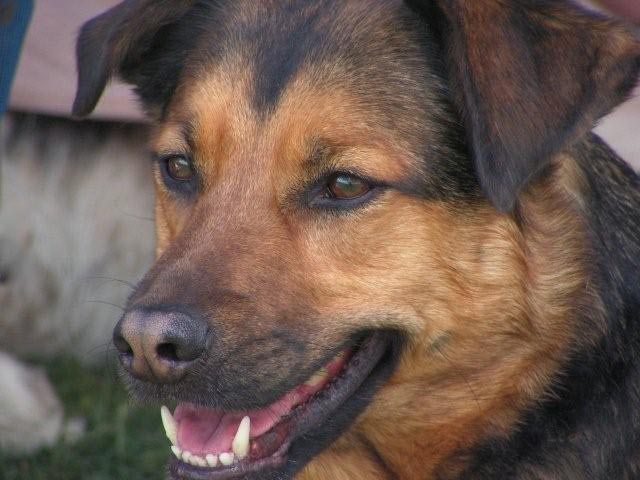
Once we could run elite/master’s-level courses fluently in class, we were off to compete. She did relatively well, despite her tendency to knock a single bar fairly often. All too soon I was faced with a choice – move to the next level, or stay in Novice. Most of my friends encouraged me to move up. I already had a slightly older dog who was tearing up the courses at the higher levels and really coming into his own. Moving Storm up would make my life easier because they would both be at the same level.
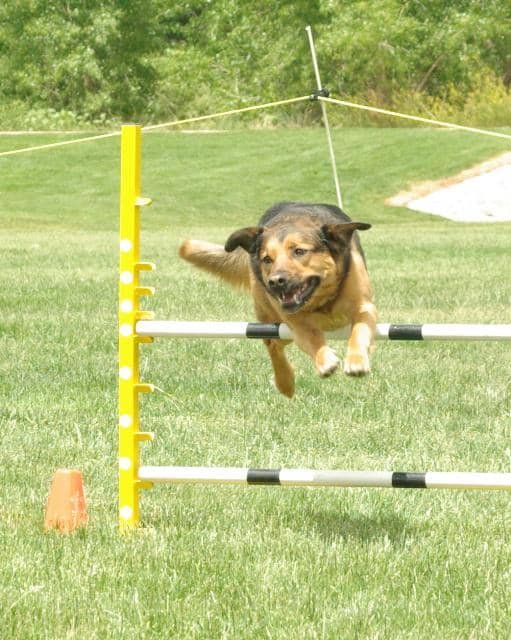
Agility = A Cohesive Team
But… something was missing. Even though she was running fast and qualifying more often than not, I frequently felt like I was just releasing an arrow on the course, or shooting a cannon. I often had to make course corrections several times during a run when she started veering in the wrong direction. I jokingly referred to her as the “one-bar wonder” because we so often missed qualifying on jumpers because of a single knocked bar. The course corrections didn’t hurt us much – she was fast enough to more than make up any wasted time. And then I realized – there was no true connection.
When running my first dog, Maxx, it often felt like he could read my mind (and oh, what a fantastic feeling that is). He was super fast, and I was… not, so we had our share of off courses, but they were because he was doing exactly what I told him to. With Storm, it felt like we each had our separate agendas. She ran fast, and she listened, but it took an awful lot of effort to direct her to where I wanted her to go. We were two halves of a team running separately on the course, not a cohesive unit.
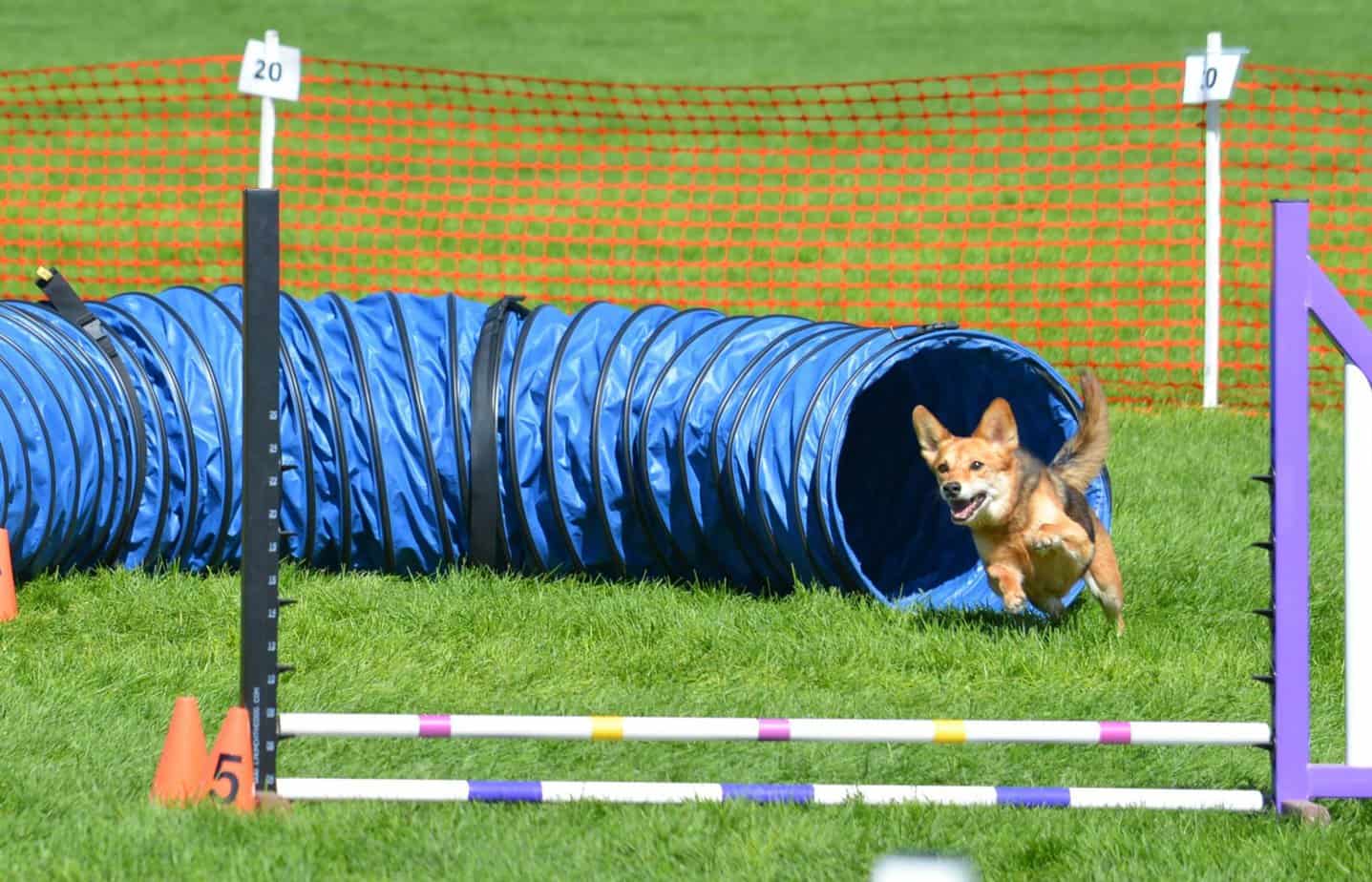
Despite the urging of my friends, I made the decision to keep her in Novice and focus on our teamwork and her confidence. Full speed ahead, decent distance, and qualifying runs aside, she lacked the confidence to drive down a line of obstacles, or stay in obstacle focus and trust that I would cue her in time. We earned our NADAC Novice Outstanding titles, and I still didn’t feel like we were firing on all cylinders together. By the time we hit Novice Superior, I felt like we were starting to get a handle on things.
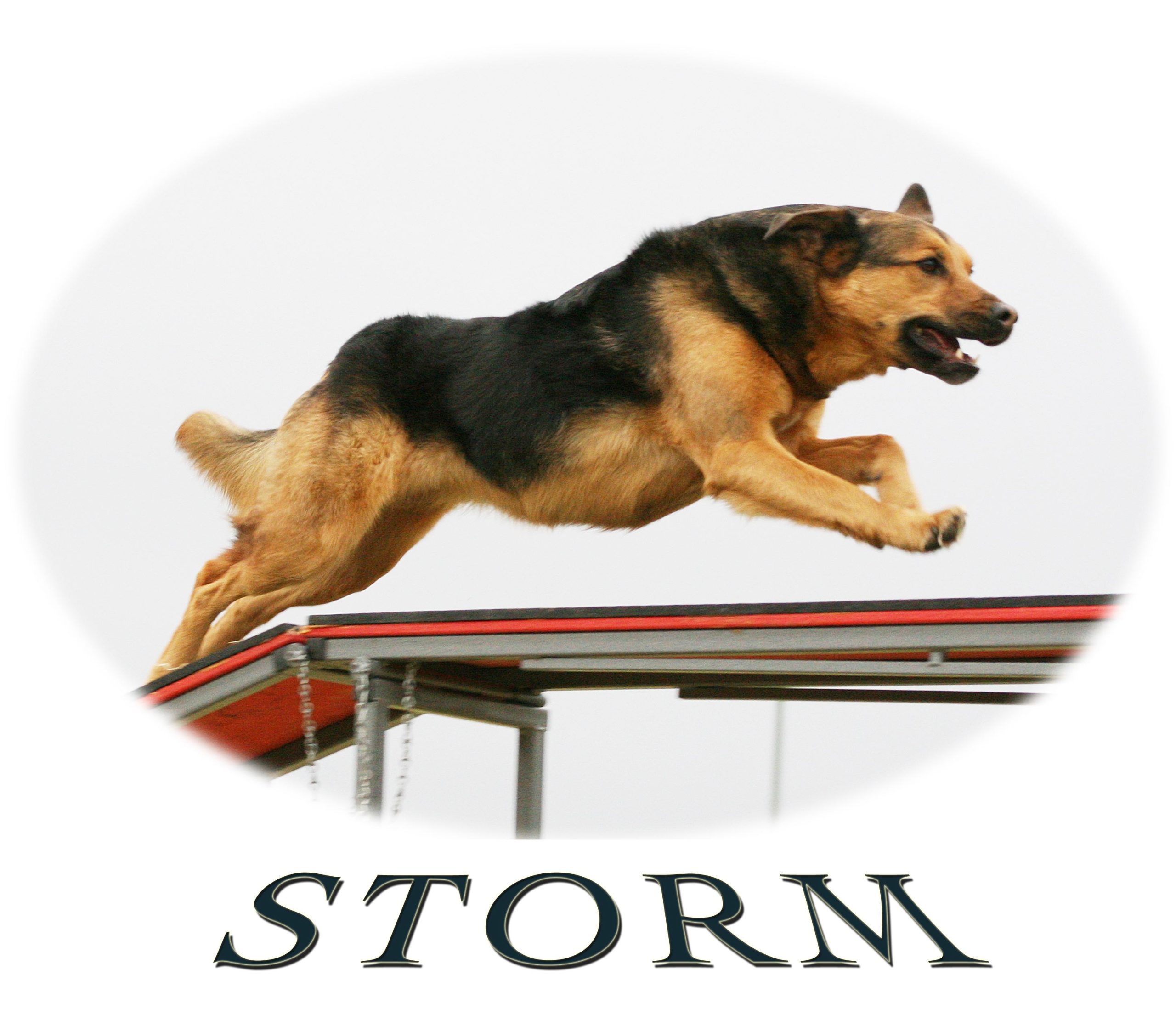
The Next Competition Level Decision
Then came Open. With the increased complexity of the courses, I thought that we could still use some additional time to work on our connection as a team. I decided right away that even though our qualifying rate was still good, I didn’t want to over face her by moving to Elite too soon, and we would stay at that level until we earned our superior titles there as well. It was the best decision I could have made for her.
Elite Agility Success and Heartbreak
By the time we got to Elite, we were a fully-functioning team. Her qualifying rate stayed high, and she was a joy to run in competition, if still a bit crazy. Her claim to fame was hitting the up side of the A-Frame, catching air, and sliding down the down side into position. We were clicking as a team and it no longer felt like I was constantly fighting to keep her on track. She did well at NADAC and DOCNA Nationals and came home with several ribbons, and earned a Championship title in DOCNA. Unfortunately, due to her hard-charging style, she was injured when she took a sharp turn on a USDAA course in wet grass and permanently damaged her shoulder. After a lot of deliberation with the vet, I retired her early in her career and she became my daughter’s full-time companion dog (which she loved). I am confident that had we been able to continue our agility journey longer, she would have accomplished even more great things.
So how do you know if you should move to the next level? Read on…
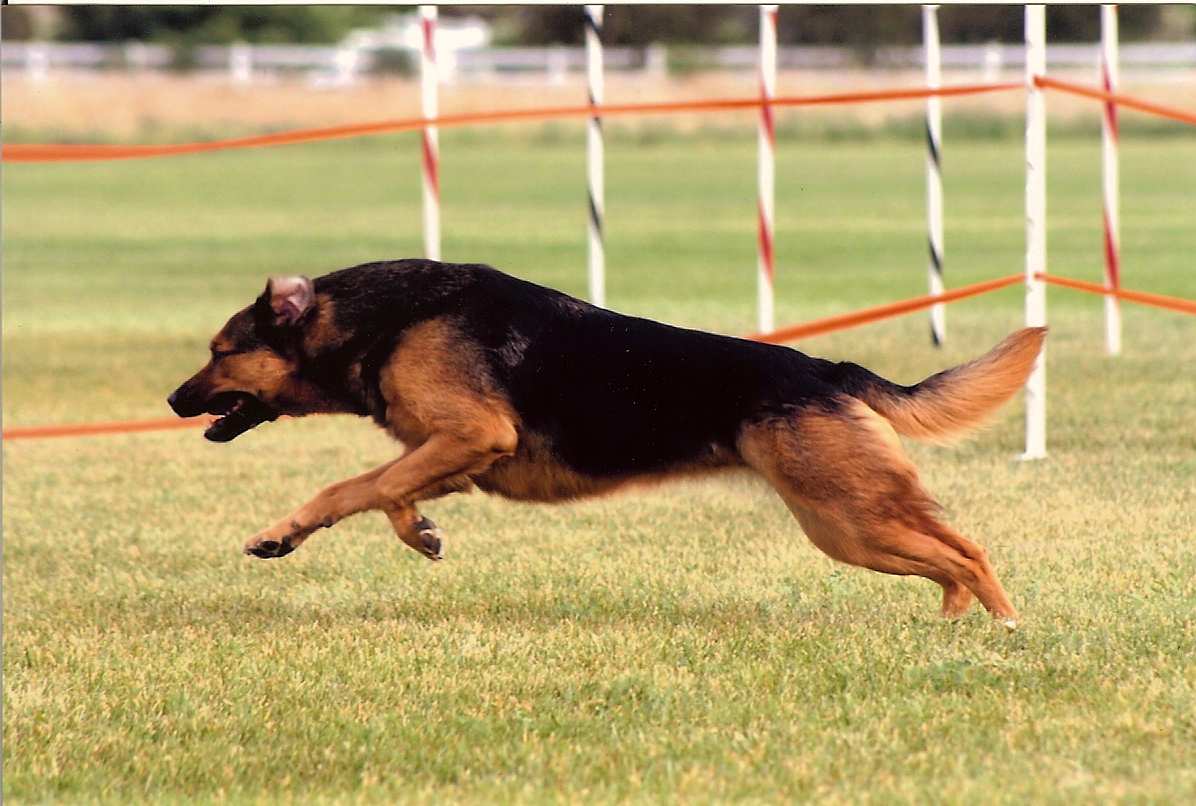
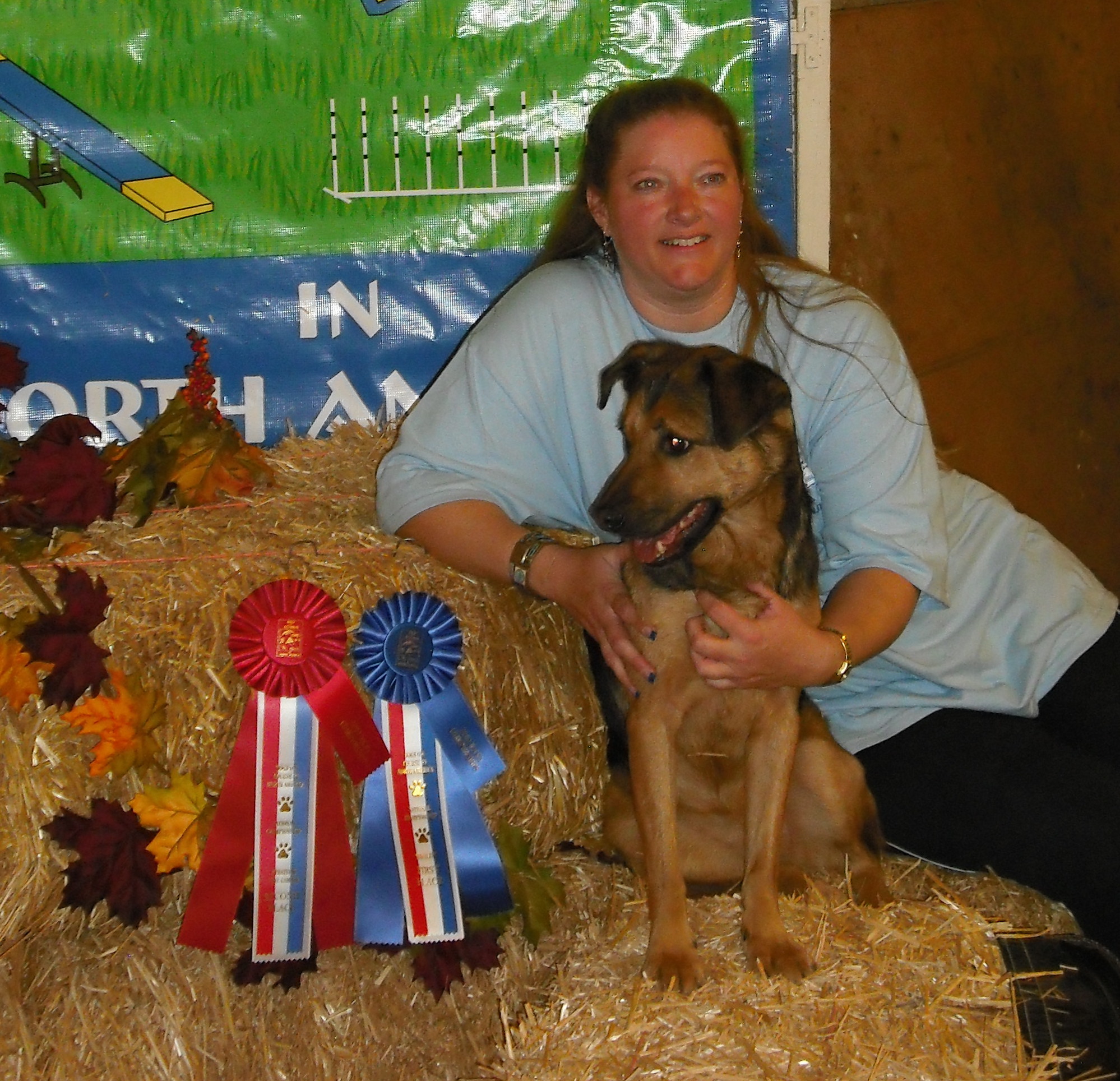
Six Criteria for Moving to the Next Level in Agility
So you have qualified enough times to move out of the beginning level – congratulations! However, having the qualifying runs doesn’t necessarily mean that moving up is the right thing for your team, or that you are ready for the additional challenges of the next level of competition. Here are some things to consider before you make the jump (excuse the pun).
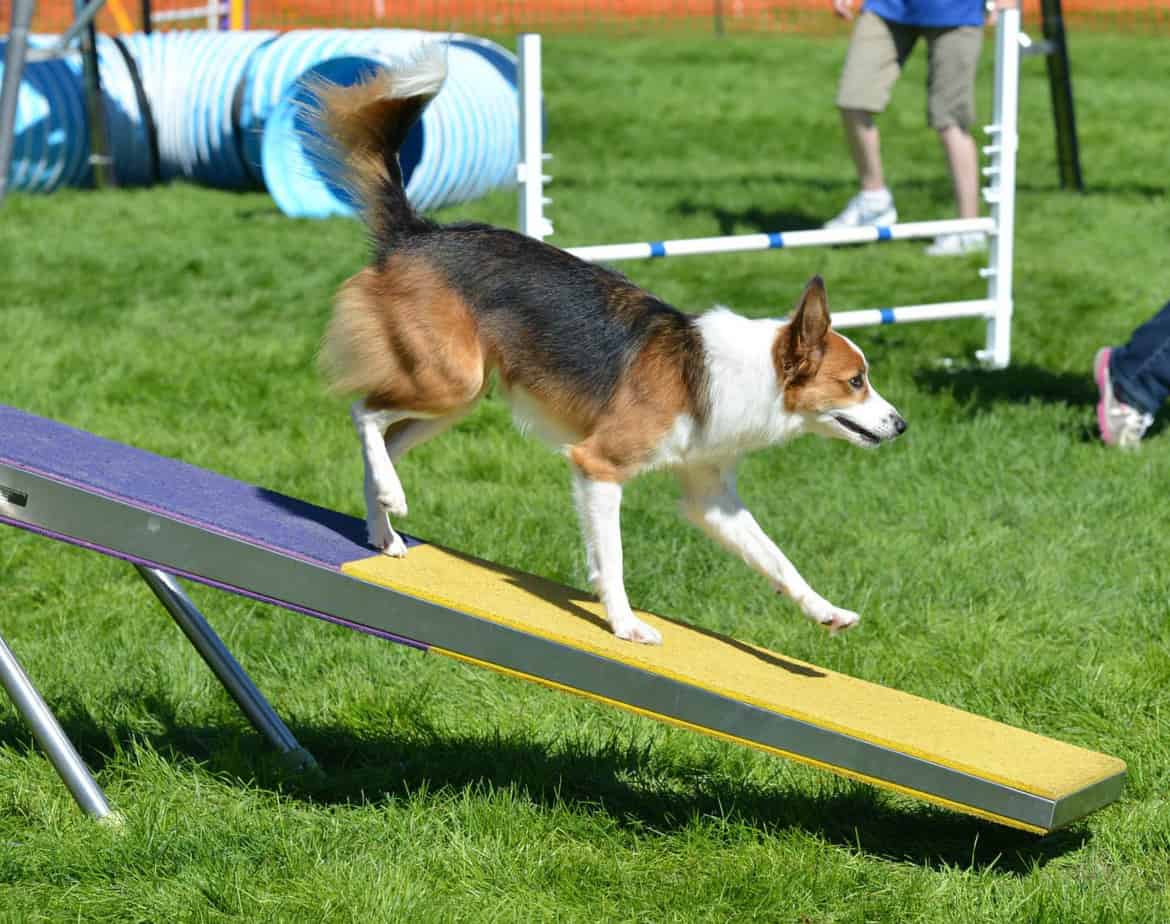
Agility Skills – Dog and Handler
Does your dog have the skills required for the next level up? Are your weave poles solid, since moving up usually means going from 6 to 12? Can your dog independently perform the obstacles without you “babysitting” contacts or running with her to each jump? Does your dog maintain your criteria for each obstacle regardless of your position or motion? What about your handling skills? Can you fluently perform the different crosses, remember the course, find the efficient lines, and direct your dog appropriately? Be honest in assessing your team’s skills. Even though there may be a lot of pressure to move to the next level, it may not be the best answer for your team. However, if the answer to all of these questions is yes, that is a good start!
Confidence of Your Dog
Is your dog confident on course with no sniffing, zoomies, or loss of focus? Can she move forward to the next obstacle without you running to it with her? Do your runs look smooth, with the dog moving out willingly? Does she trust your cues and follow the path that you indicate? Or is she displaying stress behaviors like lip licking, yawning, or sniffing? Confidence, especially at a busy and distracting trial, is harder to grow for some dogs. If your dog is not confidently following the path around the ring, she is probably not ready to move to more difficult or complex courses at the next level yet.
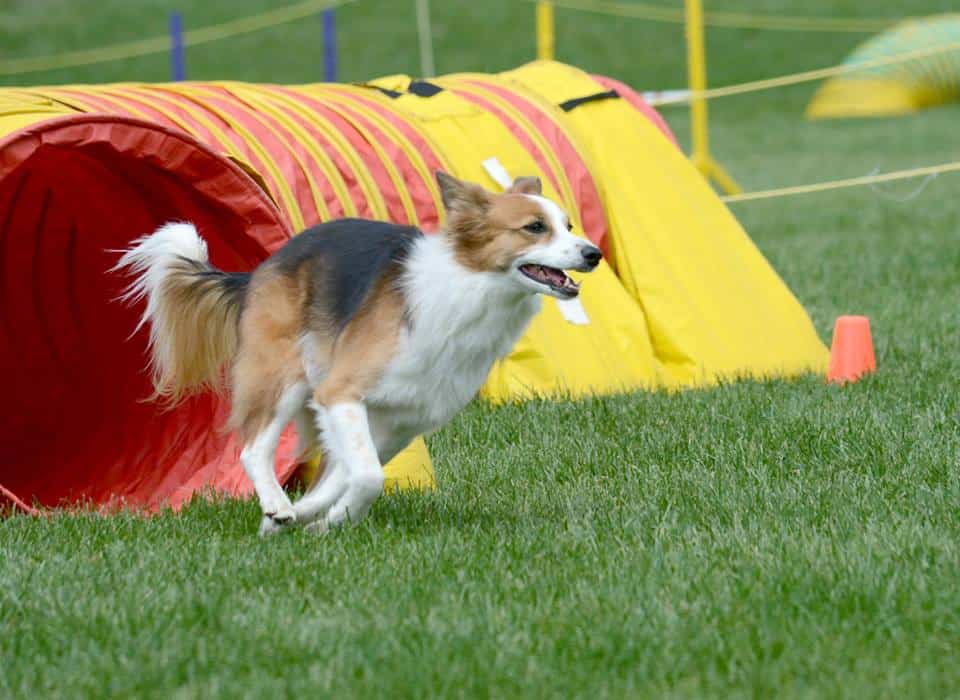
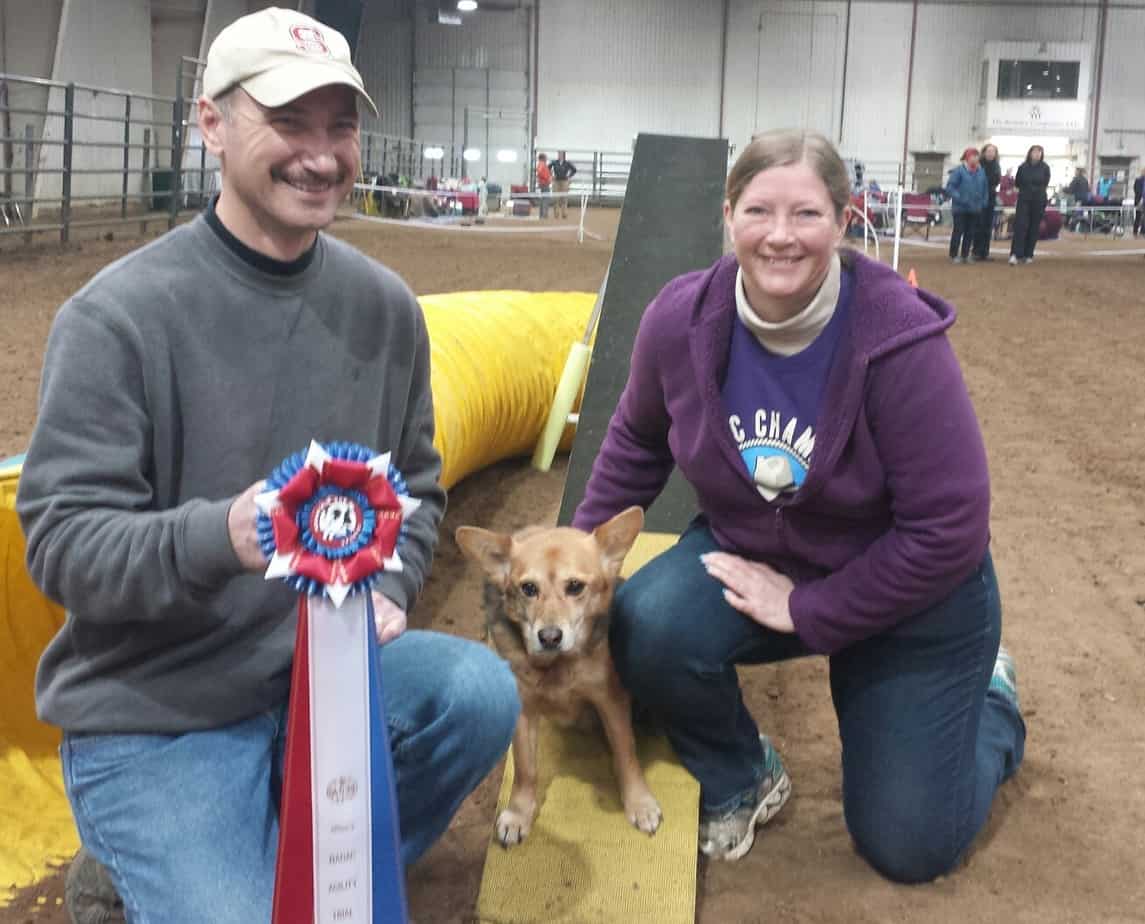
Teamwork in Competition
Are you and your dog working as a team on course? Agility “Nirvana” is having the run where it feels like the dog is reading your mind. That’s not always possible, of course, but the biggest measure of your readiness to move up to the next level of competition is whether you are communicating and working as a team. Is the dog confidently following the path you are directing her to, or is she confused, requiring redirects or “fixes” (which I don’t recommend, but that’s a topic for a separate blog). Does she understand your cues and appropriately check in with you for what’s next? Do you feel a connection on the course? If so, that is another indication that you are ready for a bigger challenge.
Balance of Obstacle and Handler Focus
Can your dog appropriately focus on you and the course in a balanced manner? When working technical sequences or tight turns, you want the dog to focus more on you than the obstacles ahead. If you are working on a straightforward sequence, or at a distance, the dog should focus more on her path between and to the obstacles than on you. The shift between obstacle and handler focus throughout the course is an important skill to have, and the proper balance ensures that your dog is ready to work on more demanding courses.
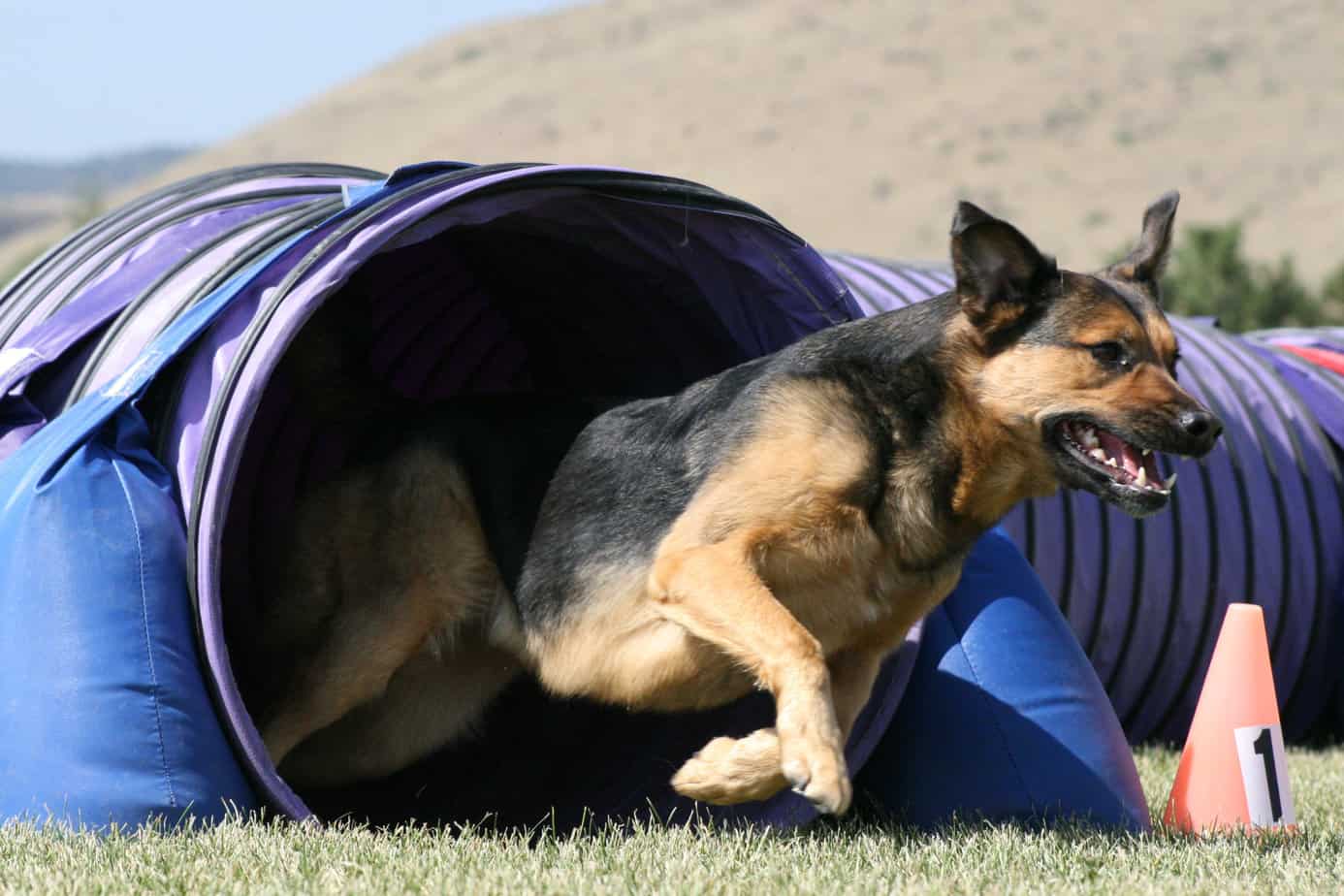
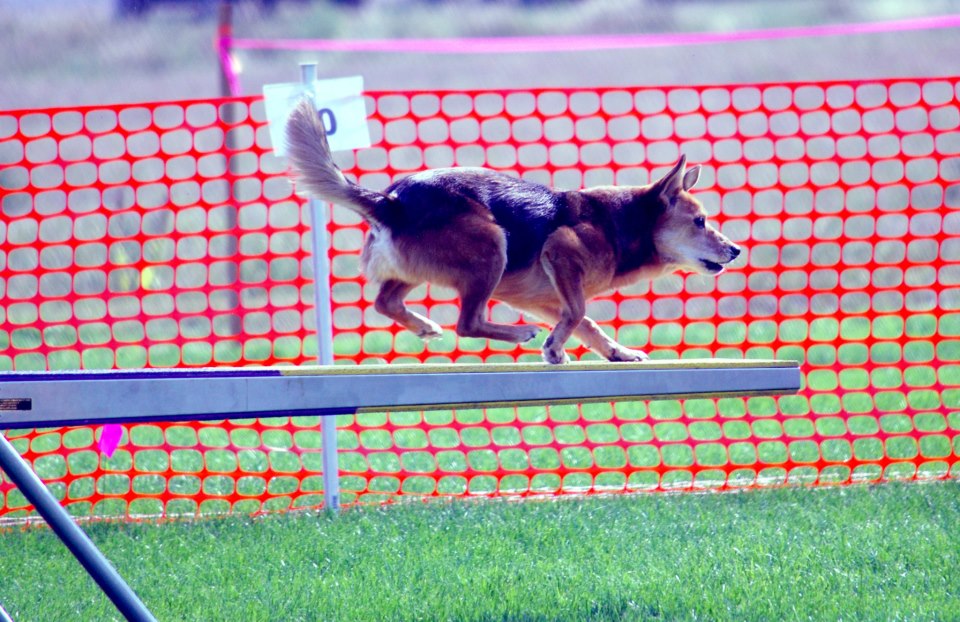
Distance on the Agility Course
Can your dog work away from you when necessary? In my distance seminars, I talk about the advantages of being able to work with your dog at a distance – not only for the distance games like Gamblers or FAST, but also throughout the other classes. (See this post for more information about distance in agility Five Skills For Distance on the Agility Course.) If you are still running from obstacle to obstacle with your dog, it will be very difficult to be successful at the higher levels, where judges intentionally design sequences that are easier to accomplish if you have distance to work with. Consider if your dog can work a reasonable distance away before deciding to move up to the next level of competition.
Your Dog’s Speed
With understanding, confidence, and teamwork comes speed. Each level of competition requires that your dog moves a little faster on the course. Is your dog running smooth and efficient lines, and qualifying well under course time, or are you still struggling to make time, or barely squeaking by? Lack of speed is normally a sign that your efficiency, distance, and teamwork should be improved before you decide to move to more complex courses.
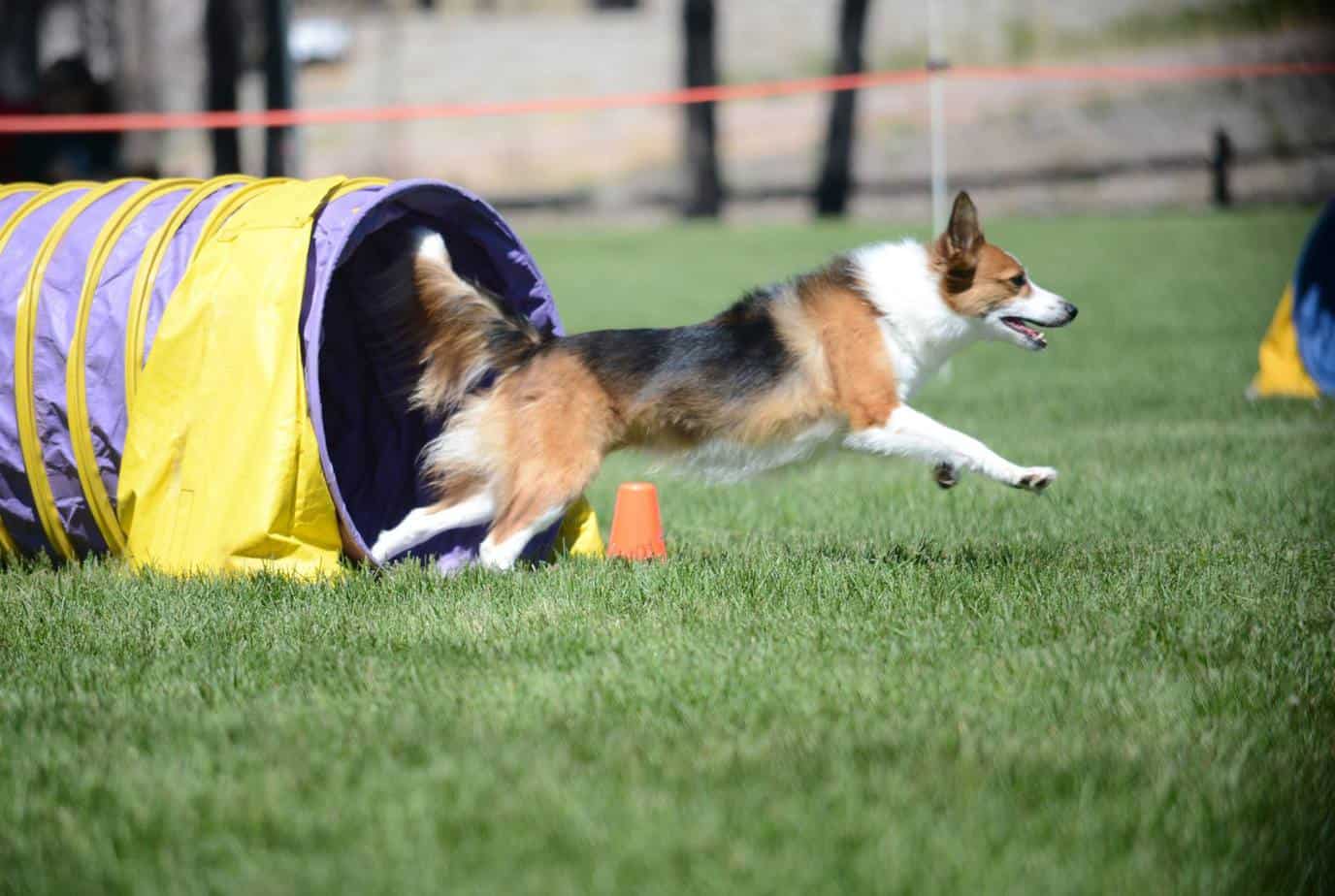
The Bottom Line for Moving Up in Agility
Each dog and team should be considered individually. We all have separate journeys through our agility career, and there is no “one right answer” for every team. My first agility dog appeared to be “born to run agility” and got his first couple of titles at his second competition. I moved him up fairly quickly based on our work as a team and his ability to succeed without stress at the higher levels. Agility dog number two took a completely different path and stayed at each level until she earned her superior titles. It would have been a disaster to move her up sooner, as we just weren’t a solid team at the beginning. Use the criteria above to determine your readiness to move up to the next level of competition.
You Might Also Like…
Five Ways to Crush It at Your Next Dog Agility Seminar
Going to a dog agility training seminar? Check out these five tips to maximize your return on investment!
Read This Before Deciding on Your Agility Dog’s Contact Performance
Which contact performance, running or stopped, is right for your team? The answer might surprise you.
Is Your Agility Dog a Pinto or a Ferrari?
If you’ve moved up from a slow or moderately-fast agility dog to a speed racer, here’s some advice to make your life easier.
Get tips, stories, discounts, and early notification of events and new courses delivered straight to your inbox! Join the community!
Cover photo: Personal photo
First, sixth, ninth photos: Personal photos
Second, third, seventh, eighth, eleventh, twelfth photos: Courtesy of Dog Agility Photos for Fun
Fourth, fifth, tenth photos: Courtesy of Stover Photography
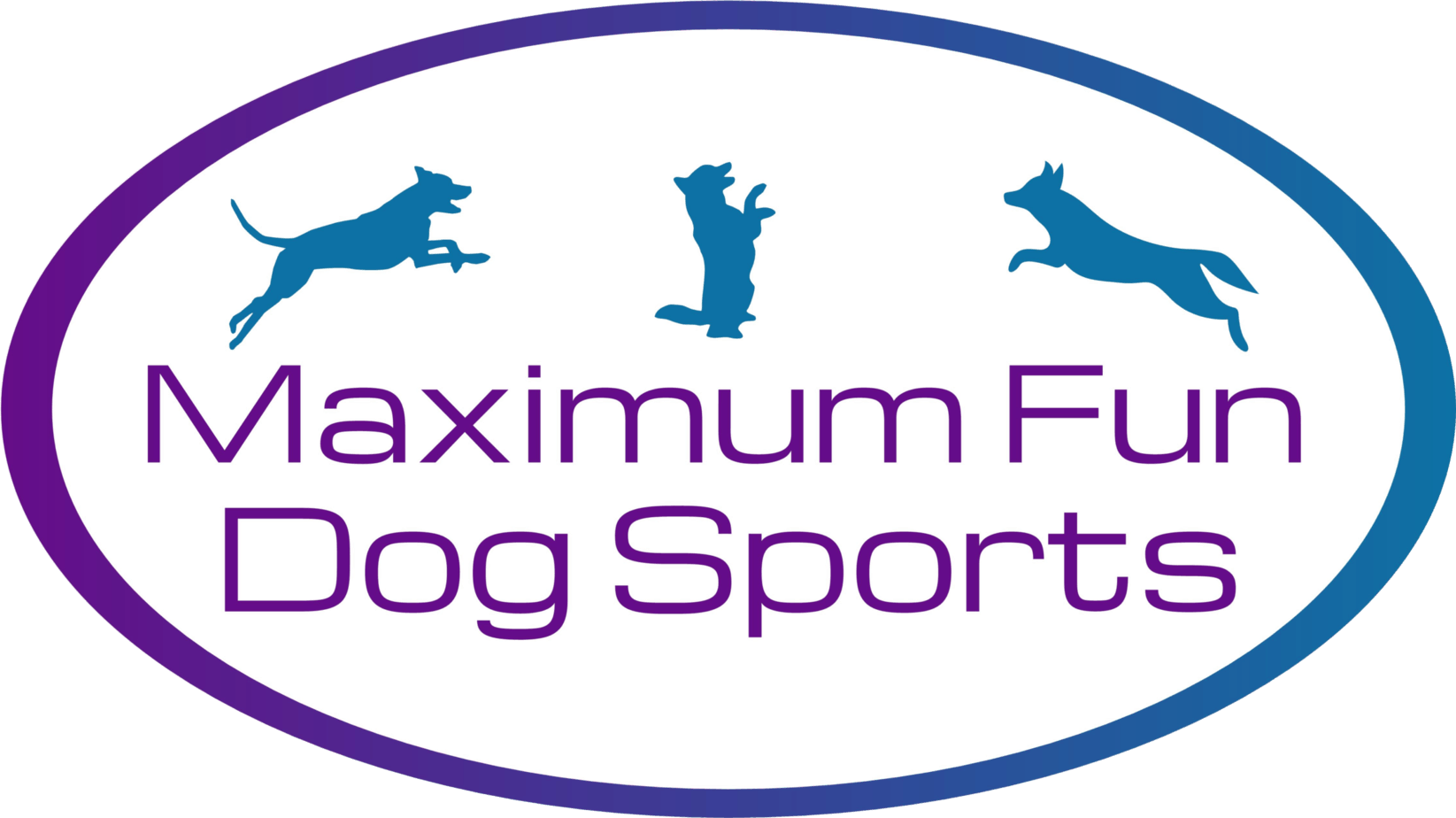
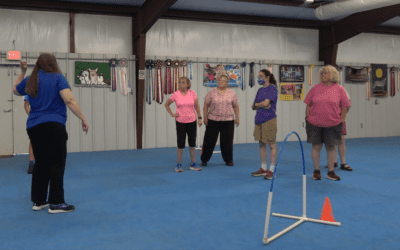
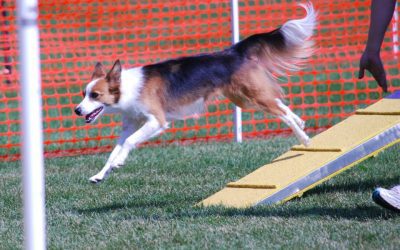
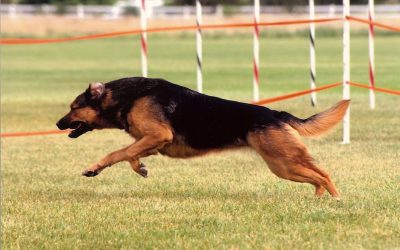
0 Comments